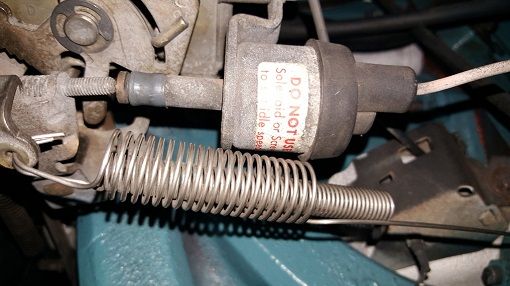YoungDart75
Well-Known Member
Ok guys ive been digging through most of the idle threads that have been posted on here and i keep coming to a few common fixes to try and get this thing fixed but dont seem to be having much luck.
Car was running and idling fine before, i had an issue with the float on the car and ended up rebuilding the carb and putting in a brass float. I followed the procedures in the manual about setting everything up to spec. Car ran fine for a little bit then the ECU crapped the bed and that was replaced. I set the timing back to 0 TDC and the car started up fine but died off after hitting temerature and being placed into gear/nuetral.
I bumped the timing back to where "the engine likes it" per some advice on another thread. Basically letting it idle until it warmed up, It began to start idling rough so I bumped the timing up as it picked up a few rpms and began to smooth out.
Shortly after that i took it for a drive and when i get to a stop it wants to fall on its face unless i keep giving it gas. Ive been looking through this for some help. But it seems the PO has always had the throttle position solenoid wire unhooked while hes had it which causes issues when trying to set idle. Also i noticed in this picture it has the accelerator pump link in the bottom groove of the rocker arm but mine has always been in the top groove. Is that an issue as ong as the distance measured is still correct?
[ame]http://u225.torque.net/cars/SL6/docs/Holley_1945.pdf[/ame]
I also saw this on the side of the solenoid and it says dont use solenoid or screw to set idle. So right now i dont really know where to proceed from here. Any help would be appreciated. Thanks in advance.

Car was running and idling fine before, i had an issue with the float on the car and ended up rebuilding the carb and putting in a brass float. I followed the procedures in the manual about setting everything up to spec. Car ran fine for a little bit then the ECU crapped the bed and that was replaced. I set the timing back to 0 TDC and the car started up fine but died off after hitting temerature and being placed into gear/nuetral.
I bumped the timing back to where "the engine likes it" per some advice on another thread. Basically letting it idle until it warmed up, It began to start idling rough so I bumped the timing up as it picked up a few rpms and began to smooth out.
Shortly after that i took it for a drive and when i get to a stop it wants to fall on its face unless i keep giving it gas. Ive been looking through this for some help. But it seems the PO has always had the throttle position solenoid wire unhooked while hes had it which causes issues when trying to set idle. Also i noticed in this picture it has the accelerator pump link in the bottom groove of the rocker arm but mine has always been in the top groove. Is that an issue as ong as the distance measured is still correct?
[ame]http://u225.torque.net/cars/SL6/docs/Holley_1945.pdf[/ame]
I also saw this on the side of the solenoid and it says dont use solenoid or screw to set idle. So right now i dont really know where to proceed from here. Any help would be appreciated. Thanks in advance.

















